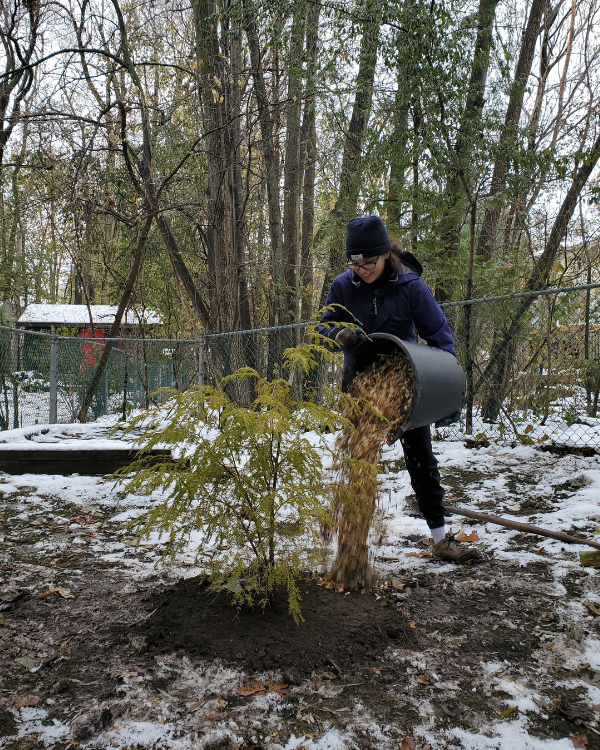Mythbusters: Top 3 Myths of Planting in the Fall
Myth #1: Spring is the best and only time to plant a new tree or shrub.
False! While spring is a popular time for planting, it is not the only suitable time. In fact, fall is just as ideal.
Summer, however, is typically undesirable for planting as it brings hot temperatures and less precipitation. These conditions can compound the normal transplant shock a tree or shrub experiences after planting, making it more challenging for them to establish.
As summer turns into fall, air temperatures decrease but soil temperatures remain warm, creating favourable conditions that promote healthy root growth and reduce water loss. Like spring, new trees begin establishing their root systems immediately following planting; however, the cooler air temperatures in the fall prompt trees to send resources to their roots in preparation for the winter, which can further strengthen root development.
After a fall planting, a tree’s roots will continue to grow until the ground freezes, which can reduce transplant shock and results in a strong, developed root system for when it emerges from dormancy in the spring.

Myth #2: If there is snow on the ground, it’s too late to plant.
Snow means the ground is frozen, right?
False! It is important to remember that soil temperature is different than air temperature. As the fall air temperature drops, the soil stays warmer for longer. The top layers of your soil may begin to frost when air temperature drops below 0℃ but deeper soil will take several days of freezing temperatures to freeze solid.
Roots will continue to grow if soil temperature is above 4°C. Even if there is snow on the ground, it is entirely safe to plant trees and shrubs until the ground is frozen solid (usually after the first major frost).
Bonus Tip: If you are able to stick a spade in the ground, you are good to go!

Myth #3: You do not need to water your newly planted tree or shrub in the fall.
False! Regardless of season, young trees and shrubs are sensitive to under watering. Rainwater and ice melt do not typically provide enough water for roots, so be sure to provide regular, deep waterings for your new tree or shrub until the ground freezes solid. Water acts as an insulator to keep the soil around the tree warmer for longer, promoting new root growth. Plant cells that take up appropriate amounts of water can benefit from this feature too, making them less susceptible to cold damage. Make sure to check for moisture in the area before watering: overwatering can cause ice crystals around roots and prevent water uptake! Water early in the day, so the plants have time to absorb it before the temperature drops at night.
On average, newly planted trees should be watered twice per week from spring when the ground thaws until the first hard frost in fall, using approximately six gallons of water each time (or four gallons for shrubs).
Bonus Tip: Add mulch around your plants! Ensure that the mulch is not more than two to four inches deep, so that roots can still get oxygen. Keep mulch in a “doughnut” shape, leaving about six inches of space around the trunk. Mulch will hold water and act as an insulator to prevent rapid freezing and thawing of soil. Read more about tree care tips here.

If you are interested in planting native trees and shrubs this fall season, apply or contact us today! Our subsidized tree planting program makes planting native species easy, fun and affordable.

0 Comments
Recommended Comments
There are no comments to display.
Create an account or sign in to comment
You need to be a member in order to leave a comment
Create an account
Sign up for a new account in our community. It's easy!
Register a new accountSign in
Already have an account? Sign in here.
Sign In Now